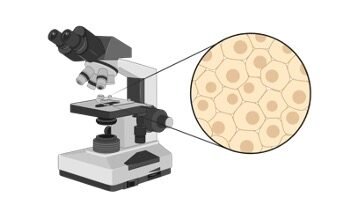Table of Contents
Embalming Definition
Embalming is an ancestral practice that employs chemicals to inhabit the decomposition of human remains to preserve them for social rites or educational purposes. It has 3 goals and preserves the entire physical body. These goals include:
Sanitization: The body is thoroughly cleaned by utilizing disinfectant and anti-microbial solutions. This helps to reduce any unwanted foul odors and delay the process of decomposition.
Preservation: The circulatory fluids like the blood and lymph are emptied from the body to preserve it and then it is pumped with embalming fluids. These chemical fluids decrease the rate of decomposition and preserve it in the recent condition.
Presentation: This involves preparing the body and making it more visually pleasing and presentable for social events like a funeral. The body is staged by massaging of limbs to decrease effects of rigor mortis, hair is styled, the body is shaved, facial expressions are set, they are dressed, and make-up is applied to give a lifelike appearance.
Embalming Process
This has been practiced since ancient times and has been a part of religious and cultural rites. The techniques and tools for this practice have evolved and may differ regionally. This process begins by positioning the body in a supine position with the head slightly elevated. The various material or tools employed in this practice are given below:
Step 1: Verification of Death: It is assessed first whether the person is dead. To verify this rigor mortis, clouded eyes, general unresponsiveness, and absence of pulse are some features that are checked. The identification of a deceased person is ascertained by foot and hand tags.
Step 2: Wash and Massage the Body: The body is stripped and the personal effects are removed, then employing an antimicrobial detergent the body is sanitized. Orifices like the mouth are carefully rinsed. Massaging of limbs removes their stiffness.
Step 3: Setting the Features: A specialized eye cap is utilized to pose the eyes by the embalmer. Then the lips are closed shut by using an adhesive, wiring, or suturing. Any visible strands of hair are removed by shaving.
Step 4: Injection of Embalming Fluid: Various chemicals are injected to temporarily preserve the state of the body. These chemicals are injected into the peritoneal cavity and vessels of the body via different methods.
Step 5: Application of Cosmetics: The embalmer applies cosmetics and moisturizer to give the skin a more lively appearance and to hide any discoloration. They can refer to a recent photograph provided by the family members.
Lack of circulation can result in discoloration of the face, which can be corrected by using make-up that adds depth and color to the skin. Hair is often styled and perfumed oils and gels are often applied to mask the odor. Then the body is dressed in formal clothes.
Embalming Fluid
Arterial embalming: Under this process, the embalming fluid is injected via a centrifugal pump into the carotid artery which displaces blood and causes it to drain through the right jugular vein.
Following these, the vessels are properly massaged to prevent the formation of clots and to uniformly distribute the fluid. A single-injection may be enough or in some cases to ensure even distribution they are injected at multiple sites.
Normally a body can hold up to 2 liters of embalming fluid. A specialized machine pumps this chemical into the blood while monitoring the pressure of vessels. Lastly, a hypodermic needle is used to fill any location that is left.
Cavity Embalming: In this, an incision is made above the navel and the abdominal cavity is performed. Then a trocar is inserted into this cavity through the incision and the contents of organs are aspirated.
Employing a concentrated embalming fluid the peritoneal cavity is filled. After which it is sutured or employing a trocar button the peritoneal cavity is shut.
Surface Embalming: In this method, the embalming fluid is applied to the skin surface that helps to deter the damage caused during the autopsy, or any cancerous disease or as a result of organ donation.
How to Become an Embalmer?
An embalmer would require education in areas of human physiology and anatomy, chemistry, mortuary practice, and embalming methods and theory. They are certified after a practical examination and are often affiliated with a professional embalming society.
In certain regions, embalming may be performed by the doctors themselves and no embalmers are required. Morticians may also practice embalming.
Embalming Citations
- Thiel embalming method for cadaver preservation: a review of new training model for urologic skills training. Urology . 2015 Mar;85(3):499-504.
- The antimicrobial capacity of embalming solutions: a comparative study. J Appl Microbiol . 2019 Mar;126(3):764-770.
- Is thiel embalming worth the risk? Am J Surg . 2021 Aug;222(2):459.
Share












